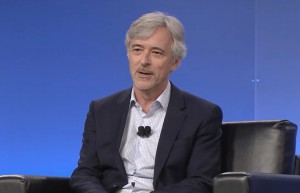
Waymo CEO John Krafcik told a crowd at NADA that its autonomous vehicle would have not hit Elaine Herzberg.
A self-driving Uber’s fatal collision with a pedestrian in Arizona is inviting scrutiny and criticism of the company’s technological capabilities from safety advocates, industry experts and the company’s direct competition: Waymo.
“We have a lot of confidence that our technology would be robust and would be able to handle situations like that one,” said Waymo Chief Executive Officer John Krafcik last weekend.
On March 18, Elaine Herzberg, 49, was struck by Uber’s Volvo XC90 as she walked her bicycle across a four-lane boulevard. The vehicle never attempted to stop or move to avoid her. The vehicle’s safety driver, Rafaela Vasquez, 44, was looking down at the time and didn’t see Herzberg until it was too late to act.
Although Tempe (Arizona) Police Department officials say that it’s unlikely the crash could have been avoided, Krafcik’s comments echo similar thoughts by other industry observers. In fact, there is an overwhelming chorus of voices saying it should have never happened.
Additionally, the incident serves as strong evidence for safety watchdogs that have been dogged in their stance that these systems aren’t ready to be tested in live conditions. While sympathetic about Herzberg, Krafcik was less than charitable to rival Uber.
(Uber fatality investigation produces more questions than answers. Click Here for the story.)
“For those of us at Waymo, it was a very sad day,” Krafcik said during the National Automobile Dealers Association conference in Las Vegas on Saturday. “It is that vision of safety and avoiding accidents just like that one that really bring us all together as a company.”
His words carry a little more venom than the average critic as Uber and Waymo have been in embroiled in vicious litigation over trade secrets that was only recently settled. Uber paid Waymo $245 million and agreed to ensure certain types of technologies will not be used in its autonomous systems.
Toyota and NuTonomy suspended their autonomous testing programs in the wake of the crash, although Waymo is continuing its tests in Arizona, Krafcik said. Waymo has been testing cars in 25 cities, although it is shuttling passengers in Phoenix. It plans to introduce that service in a second city this year, Krafcik said.
Shortly after the crash, 10 U.S. senators signed and released a letter to companies testing autonomous cars asking them to remove provisions that prevent consumers from suing. Herzberg’s family has reportedly secured an attorney but has yet to announce plans to sue.
The crash is being investigated by the Tempe Police Dept. as well as the National Traffic Safety Board. Neither has announced a deadline for wrapping up their queries, although Tempe’s police chief did suggest that Herzberg “came out of the shadows,” new videos suggest otherwise. Herzberg was struck in the far right lane of a four-lane road.
(Click Here for more details about the self-driving Uber test vehicle killing a pedestrian. )
“The car’s LiDAR (light ranging and detection laser system) should have picked the pedestrian up far before it hit her,” Raj Rajkumar, who leads the autonomous vehicle research team at Carnegie Mellon University, told USAToday.
“This type of scenario is exactly what AVs (autonomous vehicles) are built to handle, seeing an obstacle far ahead and if necessary stopping,” he says. “All groups working in this space likely are having intensive meetings now, trying to find out what happened with the Uber system, and if they may have the same issue.”
He suggested that Uber may have been having problems with its radar and/or its LiDAR system. A report in the New York Times supports the assertion that Uber’s autonomous vehicle program was experiencing difficulties.
According an internal memo, engineers were having difficulties keeping the vehicles “engaged.” Their vehicles were more likely to turn control of the vehicle over the safety driver than its competition. Despite this problem, the head of the program wanted to push ahead with more testing to keep the program in favor with new CEO Dara Khosrowshahi and other leaders.
“The cars were having trouble driving through construction zones and next to tall vehicles, like big rigs. And Uber’s human drivers had to intervene far more frequently than the drivers of competing autonomous car projects,” the Times reported.
Krafcik very clearly had an opinion about the issue.
(Toyota pauses testing of autonomous vehicles in wake of Uber fatality. Click Here for the story.)
“We won’t opine on what went wrong. That’s not our job,” he said. “There are a couple of different investigations going on. It will be interesting for us to see what the facts are, but we know that we would have detected that, we would have classified that appropriately and we would have stopped the car before someone was hurt.”

Waymo’s lawyers should advise Krafcik to shut up.